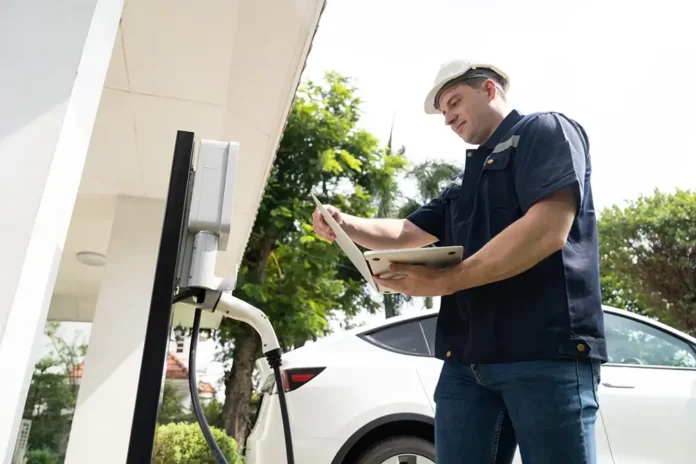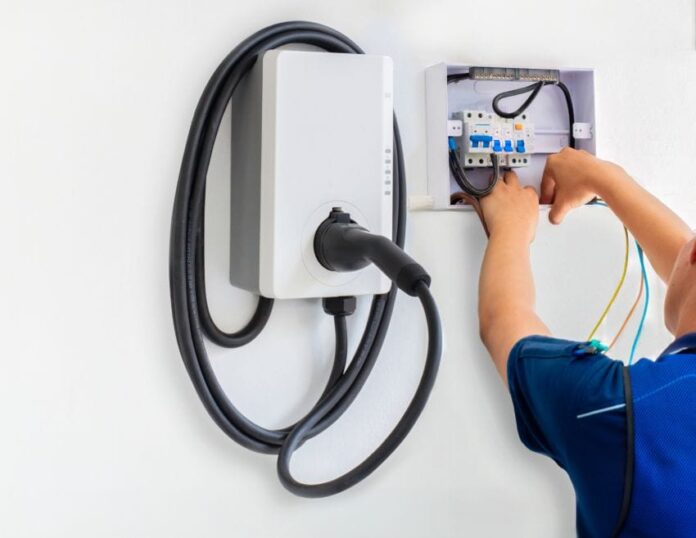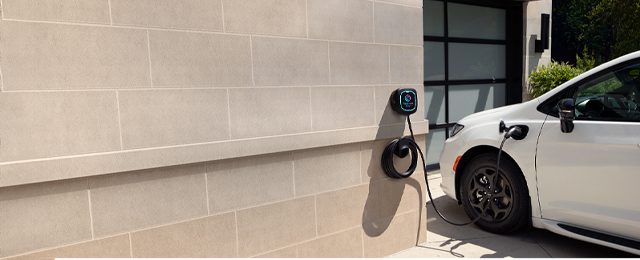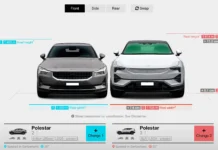Installing an outdoor electric vehicle (EV) charger is a practical investment for those looking to transition to electric mobility.
However, ensuring that the installation is done safely and correctly is crucial to prevent hazards and ensure efficient operation.
Whether you are a DIY enthusiast or hiring a professional, understanding the key steps involved in the installation process can help you avoid common pitfalls.
Planning Your EV Charger Installation

Before you begin the electric vehicle charger installation, it’s essential to plan out the process carefully. Consider the following factors:
- Choosing the Right Charger: Select an EV charger that matches your vehicle’s specifications and charging habits. Options range from Level 1, which uses a standard household outlet, to Level 2, which offers faster and more practical charging for home setups. Since Level 2 chargers are often preferred for their efficiency, some buyers also look into EV Charger Wholesale sources to find reliable options at better value.
- Location Selection: Identify a suitable location for the charger. It should be easily accessible for your EV while ensuring that it is safely distanced from water sources, such as pools or sprinklers. Also, consider the proximity to your electrical panel to minimize the length of wiring required.
- Local Codes and Regulations: Check local building codes and regulations regarding outdoor electrical installations. Compliance with these standards ensures safety and legality, preventing potential fines or rework in the future.
Preparing for Installation
Once you have planned your installation, it’s time to prepare the necessary materials and tools:
- Tools Needed: Gather tools such as a drill, screwdriver, wire strippers, conduit, and safety equipment like gloves and goggles.
- Materials: Purchase the appropriate wiring, conduit, and mounting hardware for your specific charger model. Ensure that the materials you choose can withstand outdoor conditions.
- Power Supply: Confirm that your home’s electrical system can support the additional load from the EV charger. It’s often recommended to install a dedicated circuit to prevent overloading existing circuits.
Installation Process

Now that you’re ready, follow these steps for a safe installation:
- Turn Off Power: Before starting the installation, turn off power to the circuit you’ll be working on to avoid electrical shocks.
- Mount the Charger: Secure the charger to a wall or a pole using the mounting hardware provided. Ensure it is at a comfortable height for plugging and unplugging the vehicle.
- Run Wiring: Install the conduit from the electrical panel to the charger location. Use appropriate outdoor-rated wiring to ensure safety and compliance with regulations.
- Connect the Charger: Follow the manufacturer’s instructions to connect the wiring to the charger. Double-check all connections for security and correctness.
- Connect to Power: Reconnect the circuit breaker in your electrical panel and turn the power back on. Test the charger to ensure it operates correctly.
Professional Assistance
If you are unsure about any part of the installation process, or if your electrical system requires significant upgrades, consider hiring a professional. You can order an electrician in Los Angeles to ensure the installation is performed safely and up to code.
For reliable service, check out brentwoodelectricalexpert.com, where experienced electricians can assist you with your EV charger installation needs.
Maintenance Tips for Your Outdoor EV Charger

After installation, it’s essential to maintain your outdoor EV charger for optimal performance:
- Regular Inspections: Periodically inspect the charger and its wiring for any signs of wear or damage. Look for frayed cords, loose connections, or corrosion, especially in outdoor settings.
- Keep It Clean: Keep the charger clean from dirt and debris to ensure proper functionality. Avoid using harsh chemicals; a simple soap and water solution usually works best.
- Monitor Performance: Pay attention to how the charger operates. If you notice any issues, such as slower charging times or error messages, consult a professional to troubleshoot the problem.
Conclusion
Installing an outdoor EV charger can be a straightforward process if approached with proper planning and care. By selecting the right charger, preparing adequately, and following safety protocols, you can ensure a successful installation that meets your charging needs.
Whether you choose to tackle the project yourself or enlist professional help, prioritizing safety and compliance will guarantee a reliable charging solution for your electric vehicle.







